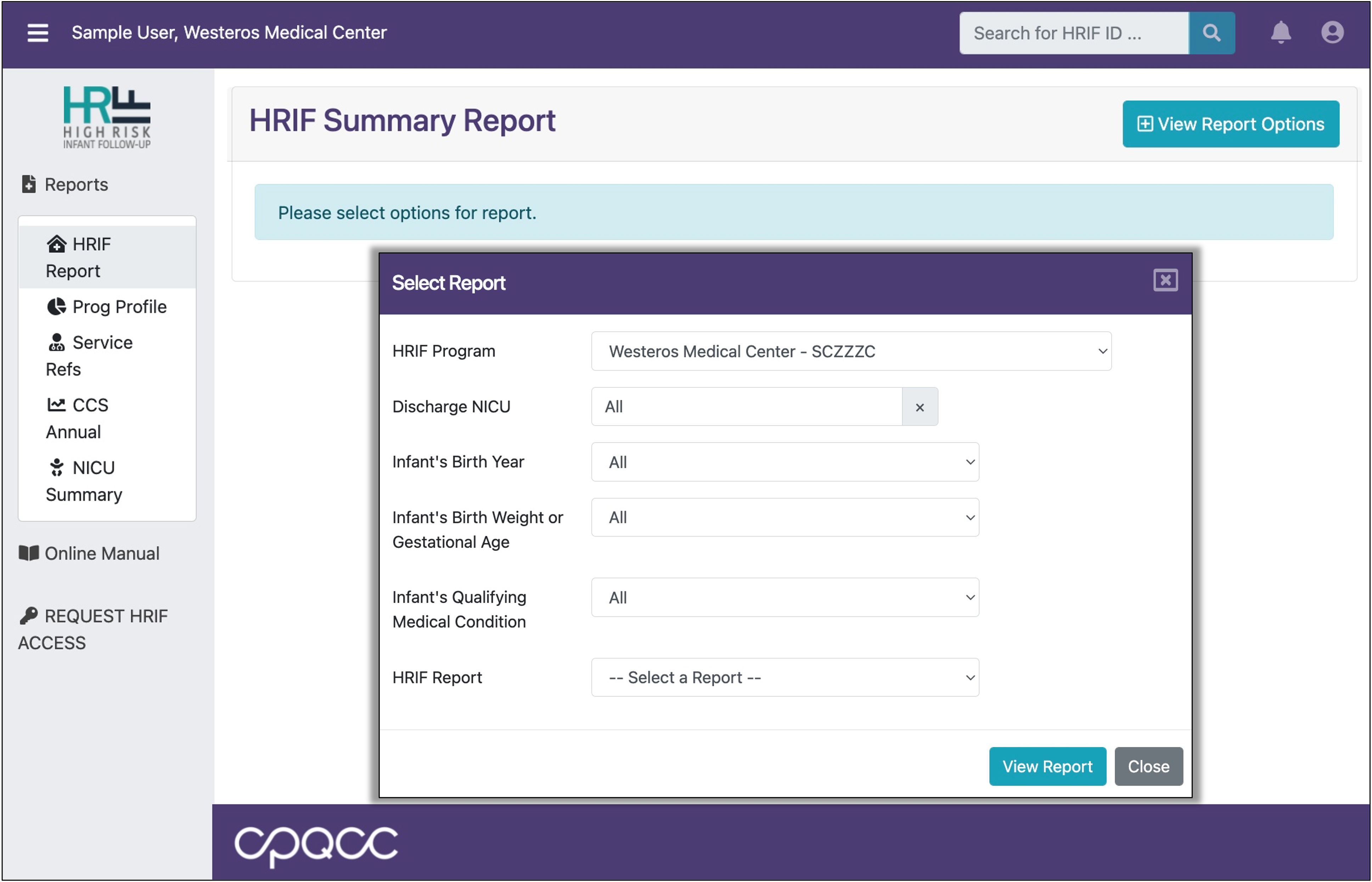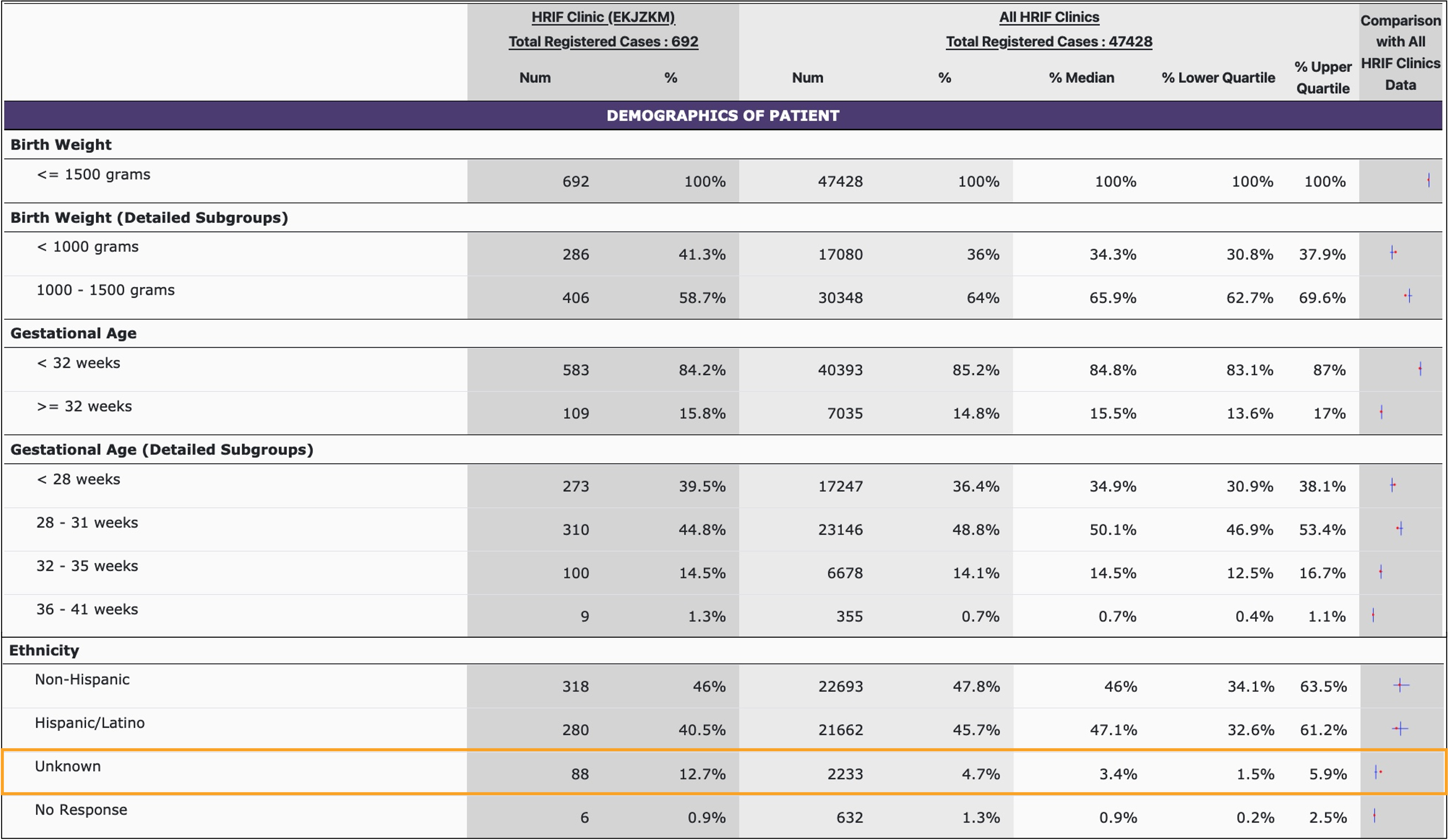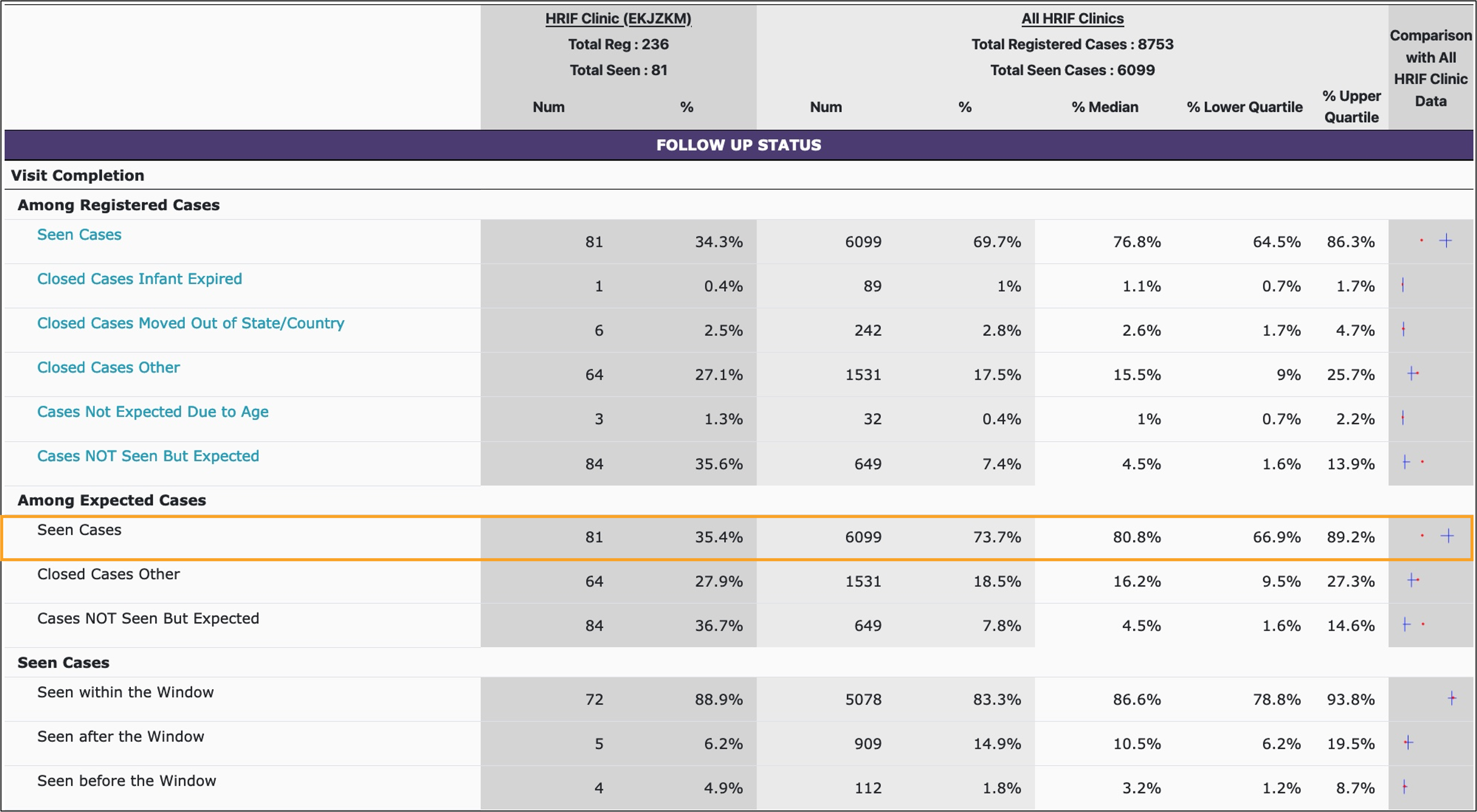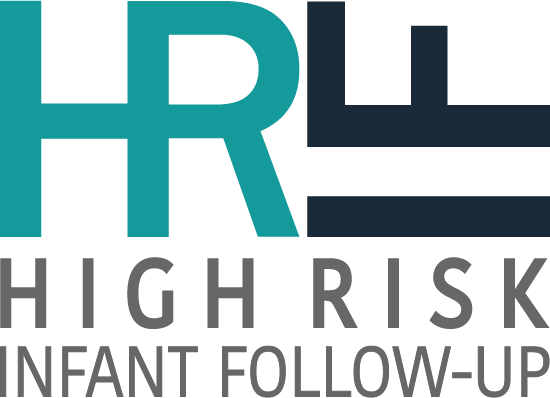Explore HRIF Outcomes
Visit our HRIF Sample App to generate system reports for yourself.
Learn how to use the Sample App in this 1 minute video.
The HRIF Reporting System includes reports designed to help HRIF clinics and NICUs turn data into action.
Summary Reports provide an overview of the patients registered and receiving follow-up services in an HRIF clinic. These reports are updated in near real-time, allowing sites to access information about their successes and challenges; make comparisons across the state, and identify opportunities for quality improvement.
- HRIF Summary includes data of patients seen and followed by an HRIF clinic, regardless of where the infants were born or discharged from.
- NICU Summary includes data for patients who were born or discharged for a NICU, regardless of where they are receiving follow-up services.
- Cardiac Summary provides Cardiac Centers with confidential information about their patient’s post-discharge care, course, and HRIF follow up outcomes.
Program Profile – a clinic’s population snapshot filtered by birth year and report section: Medical Eligibility Profile; Birth Weight/Gestational Age; and Language/Insurance compared to All HRIF Clinics in the state.
Services Referral - a quick view of a clinic’s population that had a core visit and the percentage of cases that were receiving or referred at the time of visit to Early Start; Medical Therapy Program; Medical Services Review, and/or Special Services by birth year.
CCS HRIF Annual Report - This report structure serves a dual purpose:
-
Fulfills the CCS requirement to report on all CCS-accredited HRIF Program activity and efficiently presents an annual compilation of the site-specific longitudinal outcomes.
-
Consistent with the CCS HRIF Mission and Goals – to allow sites to access information about their own successes and challenges; compare their own activities with all others in the State; provide opportunities for quality improvements.
Demographics of Patient Table
The Demographics of Patient table provides HRIF clinics with detailed information on their patient population in comparison to all other HRIF clinics in the state. In the report below, 12.7% of this HRIF clinic’s patients are coded as ethnicity “unknown” as compared to only 4.7% across all HRIF clinics in California. Identifying these gaps can present programs with valuable opportunities to explore potential areas for improvement in both the data they collect and the care they provide.
Follow Up Status Table
The Follow Up Status Table allows HRIF clinics to track the quality of their follow-up care in relation to all other HRIF clinics in the state and identify areas where they are performing better or worse than average. The HRIF clinic below is seeing 45% fewer patients than the state average and 29% more cases are closed prior to the patient’s scheduled visit.
Medical Services Review Table
The Medical Services Review Table provides detailed information on the medical services provided to a particular HRIF clinic’s patient population, either directly by the clinic or through a referral. This report allows an HRIF clinic to better understand the specialty services their patients require and allocate resources accordingly. The program below referred more patients to a medical service than the state average and 68% of those patients are receiving at 3-4+ services. 52% of referrals were for audiology whereas 35% were for pulmonology.






